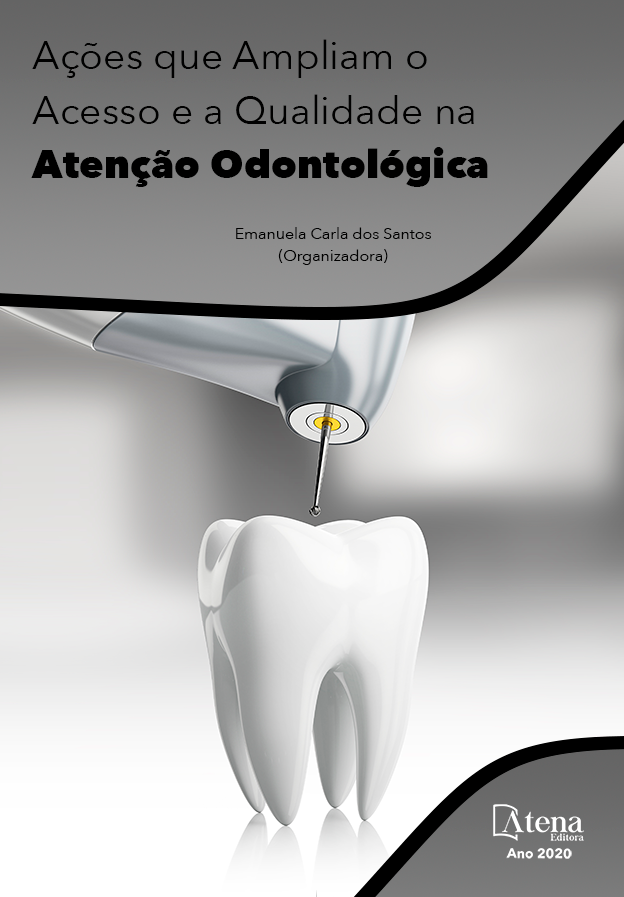
PREVALÊNCIA DAS DESORDENS TEMPOROMANDIBULARES EM PACIENTES PORTADORES DE PRÓTESE PARCIAL REMOVÍVEL
Mesmo com os avanços científicos na área odontológica, a dor ainda é uma realidade que afeta a qualidade de vida das pessoas, independente da faixa etária. E esta pode estar relacionada às Desordens Temporomandibulares (DTMs), onde na maioria das vezes não é diagnosticada de forma correta. Os desdentados parciais podem utilizar Próteses Parciais Removíveis (PPRs), nas quais devem ser confeccionadas respeitando os princípios biomecânicos de suporte, retenção e estabilidade, seguindo os critérios que devem ser obedecidos tanto na sua confecção, como em função, para evitar danos à mucosa oral, aos tecidos de sustentação e aos músculos e articulações que fazem parte do Sistema Estomatognático (SE), restabelecendo função e estética. Por este motivo, o objetivo desse trabalho foi realizar uma pesquisa com 80 pacientes usuários de PPR, onde foram avaliados os princípios biomecânicos da prótese, a oclusão do paciente por meio da dimensão vertical de oclusão (DVO), trespasse vertical e horizontal, mordida cruzada posterior e interferências oclusais, e a presença ou não de DTM através do Índice Anamnésico de Fonseca, sendo possível observar a relação da condição das PPRs com o surgimento ou agravamento das DTMs. Observou-se através da pesquisa, que a DVO, o trespasse horizontal e as interferências oclusais apresentam significância estatística no desenvolvimento das desordens, e que a quantidade de pacientes com severidade moderada de desordem e com prótese insatisfatória, é elevada. Dito isto, conclui-se que alterações oclusais em conjunto e o uso inadequado da prótese podem desenvolver ou agravar uma DTM.
PREVALÊNCIA DAS DESORDENS TEMPOROMANDIBULARES EM PACIENTES PORTADORES DE PRÓTESE PARCIAL REMOVÍVEL
-
DOI: 10.22533/at.ed.45720031111
-
Palavras-chave: Prótese Dentária; Desordem Temporomandibular; Índice.
-
Keywords: Dental Prosthesis; Temporomandibular disorder; Index.
-
Abstract:
With scientific advances in dentistry, the pain is still a reality that afeccts the quality of people’s life, independente of the age range. And it can be related to Temporomandibular Disorders (TMDs), where most of the time it’s not diagnosed of the right way. The parcial toothless can make use of Removable Parcial Dentures (RPD), in which must be made respecting biomechanical principals of support, retention and stability, following the techniques that must be met both in your confection, as in function, to avoid damage to oral mucous, support tissues, and to the muscles and joints that are part of the Stomatognathic System (SS), reestablishing function and esthetics. For this reason, was carried out of a survey of 80 pacients RPD users, where was evaluated the biomechanical principles of the prothesis, the patient’s occlusion by means of vertical dimension of occlusion (VDO), vertical and horizontal override, posterior crossbite and presence of occlusal interferences, and the presence or not of TMD throught Anamnesic Index of Fonseca, being possible to observe the relation of the RPDs conditions with the appearance or worsening of the TMDs. It was observe throught the research, that the VDO, horizontal override and occlusal interferences presente statistical significance in the development of the disorders, and that the number of patients with moderate severity of disorder and with unsatisfactory prothesis, is high. That said, it is concluded that occlusal changes together and the inapproprietade use of prothesis can develop or worsen a TMD.
-
Número de páginas: 15
- Janielly Gomes dos Santos Leite
- Mariana Josue Raposo
- Raphaela Lins de Lessa Cavalcanti


